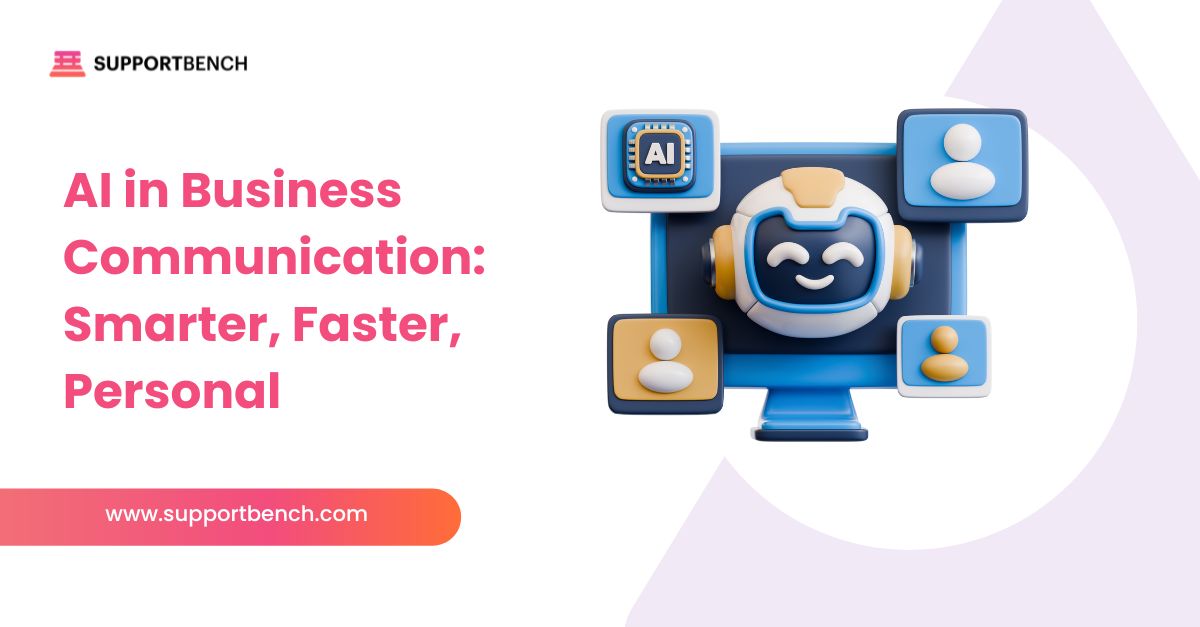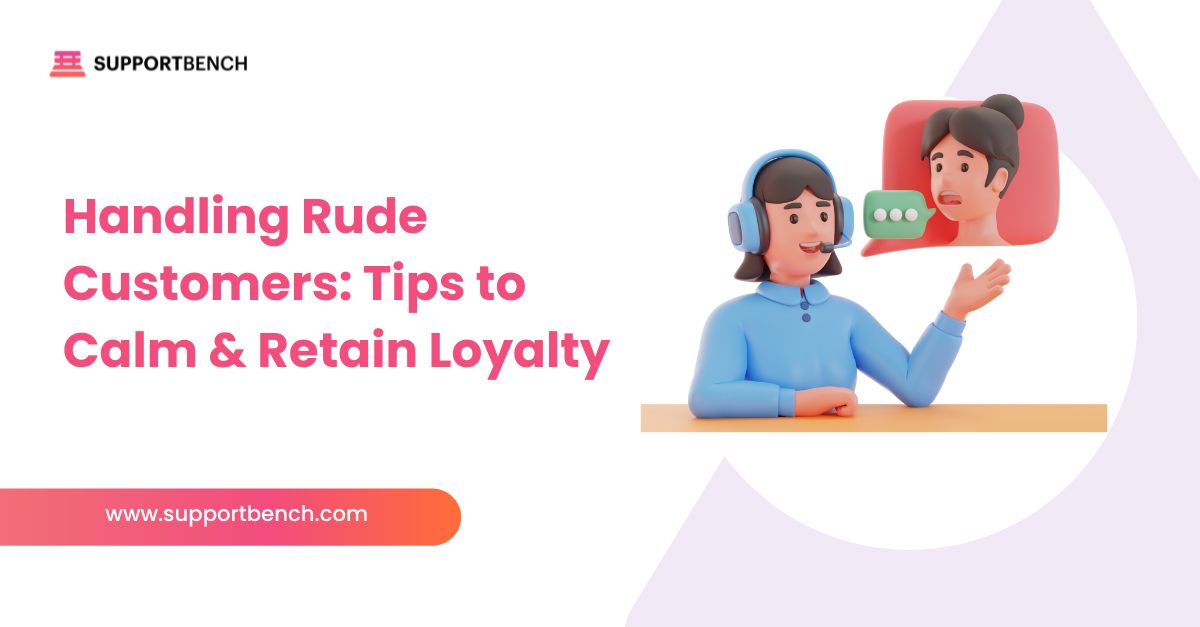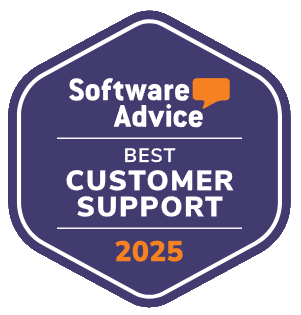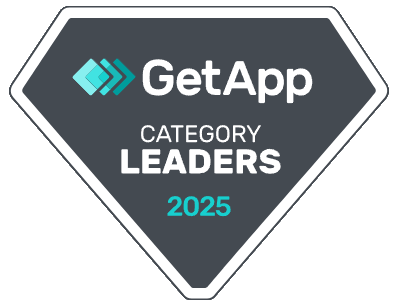A strong Ideal Customer Profile (ICP) is not built on assumptions — it’s shaped by real customer behaviour.
By analysing historical interaction data from support tickets, CRM activity, and onboarding patterns, businesses can better define their best-fit customers and improve engagement strategies.
This guide explains how to turn real engagement insights into a data-backed ICP that drives smarter marketing, sales, and support decisions.

What is an ideal customer profile?
An Ideal Customer Profile (ICP) defines the type of customer who benefits most from your product or service and delivers the greatest value to your business. It goes beyond basic demographics by combining firmographic data, behavioural patterns, and historical interaction insights to build a complete picture of your best-fit customers.
Traditional ICPs often rely on assumptions or external data points like company size or industry. In contrast, a modern, data-driven ICP uses real customer interactions across email, chat, support tickets, and CRM systems to uncover consistent success patterns.
By analysing historical engagement, businesses can identify the behaviours and traits that truly predict customer satisfaction, loyalty, and long-term value.
Why Historical Interaction Data Builds a Better ICP
Many companies build Ideal Customer Profiles based on intuition or surface-level attributes like company size or industry. While helpful, these profiles often overlook the behaviours and engagement patterns that drive true customer success.
Historical interaction data offers a deeper view. Rather than guessing, teams can analyse real behaviours to identify consistent signals of satisfaction and loyalty.
For example:
- Support ticket analysis for customer success teams can reveal customer segments that escalate fewer issues, resolve problems quickly, and maintain high CSAT scores.
- Tracking onboarding activity through CRM and support channels highlights customers who activate fast and require less hand-holding.
- Reviewing ticket volume, time-to-resolution, and NPS feedback identifies friction points and areas for improvement across different customer types.
By basing your ICP on actual engagement data, you focus on the customers who are most likely to succeed — not just those who seem like a good fit on paper.

Key Types of Interaction Data That Strengthen Your ICP
To build a high-impact Ideal Customer Profile, go beyond firmographics and focus on interaction data that reveals real customer behaviours.
Here are the key types of data to include:
Support Tickets and Case Histories
Analysing support tickets uncovers patterns in issue types, resolution speed, and escalation frequency.
Customers who require fewer escalations and resolve issues quickly often indicate a stronger long-term fit. This insight fuels AI-driven segmentation for customer insights, helping you identify ideal accounts based on real support outcomes.
Onboarding and Activation Metrics
Tracking onboarding success reveals early engagement signals. Metrics like time-to-activation, feature adoption rates, and initial support ticket volume can predict which customers will succeed quickly — a key input for data-backed onboarding personalisation strategies.
Customer Satisfaction and Feedback Data
CSAT scores, NPS responses, and qualitative feedback highlight how customers perceive your product and service. Consistently positive feedback often correlates with smoother onboarding, higher product usage, and fewer support escalations.
CRM Interaction History
Email engagement, sales communications, and renewal discussions show relationship strength over time. Unifying customer profiles across channels ensures CRM data is combined with support and product usage insights for a holistic view.
Behavioural and Product Usage Analytics
Metrics like session frequency, feature usage, and retention rates reveal how deeply customers embed your product into their workflows. Highly engaged users signal strong product-market fit, helping refine your ICP for growth potential.

How to Extract ICP Insights from Historical Interaction Data: A Step-by-Step Guide
Building a data-backed Ideal Customer Profile starts by turning historical interactions into actionable intelligence.
Here’s a structured process to follow:
Step 1: Consolidate All Customer Interaction Data
Gather historical data from all sources — CRM analytics, support ticketing systems, chat logs, and survey feedback. Align these records under unified customer profiles to avoid fragmented insights.
Step 2: Categorise Customers by Outcome
Segment customers into successful and less successful groups using metrics like retention rates, renewal frequency, and CSAT scores. This helps you focus analysis on your top-performing accounts.
Step 3: Identify Common Behavioural and Support Patterns
Look for trends among high-performing customers:
- Which support channels do they prefer?
- How often do they submit support tickets?
- What onboarding steps do they complete fastest?
- Which product features do they engage with most?
Step 4: Map Interaction Data to Firmographic Attributes
Once behavioural patterns are clear, connect them to firmographics like industry, company size, and region. This adds business context to your behavioural insights.
Step 5: Apply AI-Driven Segmentation for Deeper Insights
Use AI-driven segmentation to uncover hidden success patterns in large datasets. Machine learning can surface correlations between support activity, customer lifetime value, and loyalty that human analysis might miss.
Step 6: Document and Visualise Your Findings
Summarise your insights into an actionable ICP document or dashboard. Include both behavioural traits (e.g., “activates within 14 days”) and firmographic markers (e.g., “tech companies with 50–200 employees”).
Tools and Platforms to Build a Data-Driven ICP
Creating an Ideal Customer Profile (ICP) from interaction data requires systems that can gather, unify, analyse, and action customer insights.
Here’s the essential toolkit your teams need:

CRM and Customer Data Platforms (CDPs)
CRMs capture customer sales history and communication records, while advanced CDPs add behavioural insights for smarter segmentation.
Supportbench’s CRM unifies customer interactions across sales, support, and marketing, creating a dynamic, living customer record.
Support Ticketing and Interaction Analysis Tools
Analysing support tickets, chat logs, and resolution metrics reveals customer experience patterns. Custom tagging, sentiment analysis, and time-to-resolution tracking identify common traits among high-value customers.
Supportbench helps track interactions across channels, connecting support outcomes to long-term loyalty.
AI-Powered Segmentation Engines
AI-driven segmentation enhances pattern recognition by clustering customers based on engagement, satisfaction, and support needs. This automation highlights correlations faster than manual methods.
Supportbench’s segmentation engine surfaces hidden success predictors to sharpen your ICP.
Journey Mapping and Behavioural Analytics Platforms
Journey mapping tools follow customers across touchpoints, capturing drop-offs, feature adoption, and preferred channels.
Supportbench’s multi-channel journey mapping provides a real-time view of customer behaviours, enriching firmographic profiles with behavioural depth.
SLA Management and Prioritisation Engines
Once your ICP is built, maintaining service quality for your best-fit customers is critical. Smart SLA and prioritisation with ICP lets you fast-track service or escalate support automatically for high-value accounts inside Supportbench.
Connecting Interaction Patterns to Firmographic and Behavioural Traits
After extracting behavioural insights from historical data, the next step is linking those patterns to firmographic attributes. This connection creates an Ideal Customer Profile (ICP) based on both who your customers are and how they behave.
Start with Behaviour-Based Segmentation
Group customers first by behavioural patterns such as fast onboarding, high product adoption, minimal support escalations, or high CSAT scores. Behavioural consistency is a stronger predictor of success than surface-level traits like industry alone.
Overlay Firmographic Attributes
Once behaviour groups are established, map shared firmographic traits like:
- Industry
- Company size
- Revenue range
- Geographic location
- Tech stack compatibility
This step identifies which firmographic characteristics align most strongly with positive behavioural patterns.
Identify Traits That Predict Success
Look for common threads between firmographic and behavioural data. For example:
- SaaS companies with 50–200 employees that achieve rapid onboarding success.
- Financial firms showing low ticket volumes and high renewal rates.
These combined traits help shape a clear, actionable ICP.
Prioritise Traits for ICP Definition
Not every trait carries equal weight. Focus your ICP on firmographic and behavioural attributes that most strongly correlate with:
- High retention
- Fast product adoption
- Positive customer feedback
- Low support friction
Prioritising ensures that your ICP is practical, predictive, and aligned with real-world success patterns.
Real-World Examples of Data-Driven ICP Creation
Many organizations have used historical interaction data and self-assessment to refine their Ideal Customer Profiles (ICPs), leading to stronger segmentation, better personalization, and sustainable growth.
American Express Finds Growth by Targeting the “Design Sweet Spot”
American Express identified their most loyal, high-value customers through behavioural segmentation.
Rather than targeting all new segments, AmEx refined its focus by overlapping traits from their happiest existing customers with new research findings to create a “design target.”
This strategy led to the development of tailored products like executive rewards cards, allowing AmEx to boost customer retention and profitability while keeping marketing costs low.1
Global Investment Bank Sharpens Focus Through Self-Assessment
A global investment bank conducted a rigorous self-assessment by surveying both their happiest and unhappiest profitable clients.
They discovered that complex, multinational organizations valued their expertise in technical and regulatory matters, while simpler clients often found the same expertise overwhelming.
This insight enabled the bank to refocus efforts on complex clients that aligned with their strengths, maximizing customer satisfaction and operational efficiency.2

5 Common Mistakes to Avoid When Building Your ICP
Creating a data-backed Ideal Customer Profile (ICP) is powerful, but it’s easy to fall into avoidable traps.
Here are the most common mistakes — and how to steer clear of them:
1. Relying Only on Surface-Level Firmographics
Focusing solely on attributes like industry or company size leads to shallow ICPs. Without behavioural data, you risk targeting prospects who look good on paper but underperform in reality.
Tip: Always layer historical interaction data over firmographic details for a complete picture.
2. Ignoring Negative Signals
It’s not enough to study successful customers — failures teach just as much. Patterns among churned accounts or low NPS scorers offer critical insights.
Tip: Analyse both successful and unsuccessful patterns to refine your ICP accurately.
3. Overcomplicating Segmentation
Tracking too many variables can overwhelm teams and dilute focus. An overly complex ICP becomes difficult to use across marketing, sales, and support.
Tip: Prioritise 5–7 traits that most strongly predict customer success and retention.
4. Building a Static ICP
Customer behaviour evolves, and so should your ICP. A static profile based on outdated data can lead teams astray.
Tip: Schedule regular ICP reviews, using AI-driven segmentation tools to keep it current.
5. Isolating the Process from Frontline Teams
Building an ICP in isolation from support, sales, and success teams often misses key ground-level insights. Frontline teams interact with customers daily and spot patterns data alone may not reveal.
Tip: Involve cross-functional teams early and often when refining your ICP.
How to Operationalise Your ICP Across Marketing, Support, and Sales
Building a strong Ideal Customer Profile (ICP) is only the first step. Its real value emerges when it is actively used across customer-facing teams to guide targeting, personalisation, and resource allocation.

In Marketing: Target, Personalise, and Qualify
Marketing teams can use the ICP to sharpen targeting, craft more relevant messaging, and qualify leads more efficiently.
Focus paid campaigns and content on audiences that match your ICP traits. Personalise nurture sequences based on company size, industry-specific pain points, or engagement patterns. Implement lead scoring models that prioritise prospects with behavioural and firmographic similarities to your best customers.
In Sales: Prioritise Pipeline and Personalise Outreach
Sales teams benefit from a clear ICP by focusing efforts on prospects with the highest likelihood of success and retention.
Prioritise accounts that align closely with your ICP’s firmographic and behavioural markers. Tailor outbound messaging, demos, and proposals to reflect the proven success patterns. Use ICP criteria to qualify opportunities faster and avoid wasting time on poor-fit leads.
In Support and Customer Success: Customise Service and Scale Retention
Support and Customer Success (CS) teams can use the ICP to optimise workflows and deliver proactive service.
Set up smart SLA and prioritisation engines to fast-track support for high-fit customers. Customise onboarding paths and intervention strategies based on ICP traits, such as early feature adoption or high initial value indicators. Monitor ICP-fit accounts for expansion opportunities and churn risks using customer health scoring tied to behavioural data.
Conclusion
Building an Ideal Customer Profile (ICP) with real interaction data transforms guesswork into precision. By grounding your ICP in actual customer behaviours and engagement patterns, you create a foundation for smarter marketing, sales, and support strategies.
A data-driven ICP does more than define your best customers — it empowers your teams to find, serve, and grow them at scale.
When operationalised across departments, your ICP becomes a dynamic tool that drives better targeting, personalisation, and long-term customer success.















